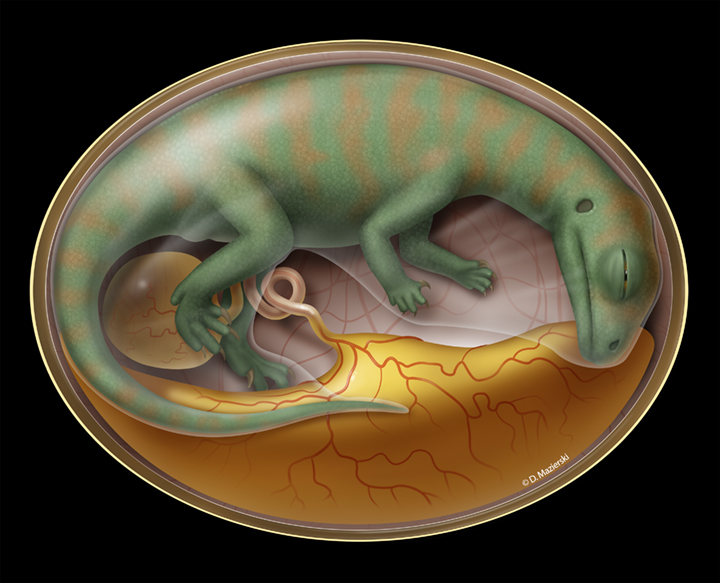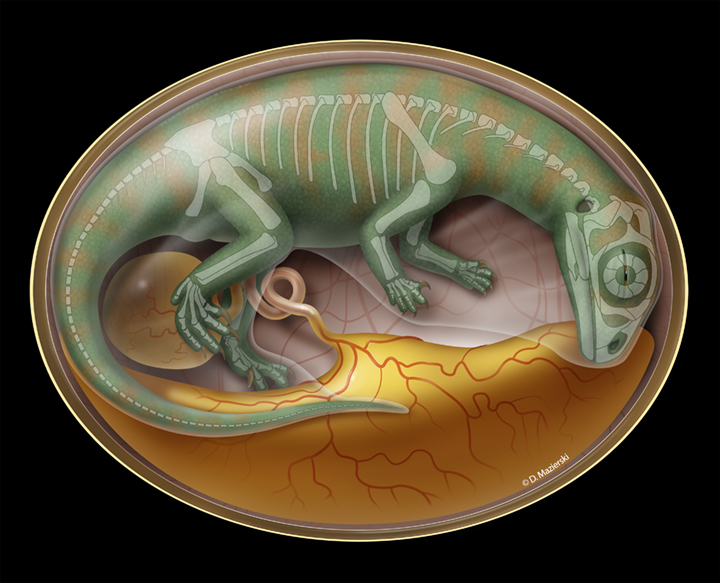Early Jurassic dinosaur embryos tell an ancient tooth tale
Dinosaur embryos are a prized find for palaeontologists. A recent discovery of embryonic bones and teeth from the Early Jurassic period of Yunnan, China, has given researchers an even rarer glimpse – early tooth formation in a baby dinosaur.
Earth Sciences Prof. Hillary Maddin was part of an international research team who recently studied the excellently preserved embryonic jawbones of an early sauropodomorph dinosaur called Lufengosaurus – a distant relative of the giant, long-necked sauropod dinosaurs. These embryonic dinosaur skeletons are among the oldest in the world and include preserved jaws with teeth still inside.
The fossils were originally collected during an expedition led by Timothy Huang of the National Chung Hsing University in Taiwan, and were carefully prepared by Diane Scott, a preparator at UTM. Subsequently, CT work by Prof. Madden and histological thin sections by Dr. Aaron LeBlanc, then a PhD student at UTM, revealed multiple generations of developing, unerupted teeth in embryos of this early dinosaur.
“The CT data are like a digital dissection. We can visualize the shapes and positions of the baby teeth within the tiny jaw, all without destroying this rare fossil” said Maddin. “These unique fossils allowed us to compare for the first time the development of embryonic teeth to both hatchlings and adult teeth of the same kind of dinosaur” added Reisz, “surprisingly we found that tooth development was rapid in the unhatched embryos, with multiple generations of teeth coexisting in each tooth position in a wide jaw”.

The team were very excited to discover that the early embryonic teeth of this early sauropodomorph dinosaur were actually more like the teeth of some of their descendants, the giant sauropods that had massive batteries of teeth as adults for processing plant material. This discovery allowed the team to propose that the evolution of complex dental batteries and the pencil-shaped adult teeth in the giant herbivorous sauropod dinosaurs may have evolved through paedomorphosis: the retention of embryonic developmental stages in adults.

The similarities between embryonic Lufengosaurus teeth and those of much later-occurring species show that paedomorphosis was a common theme in the evolution of sauropods, the largest and longest-lived land dwelling animals of all time.
The paper appears in the journal Nature Communications.